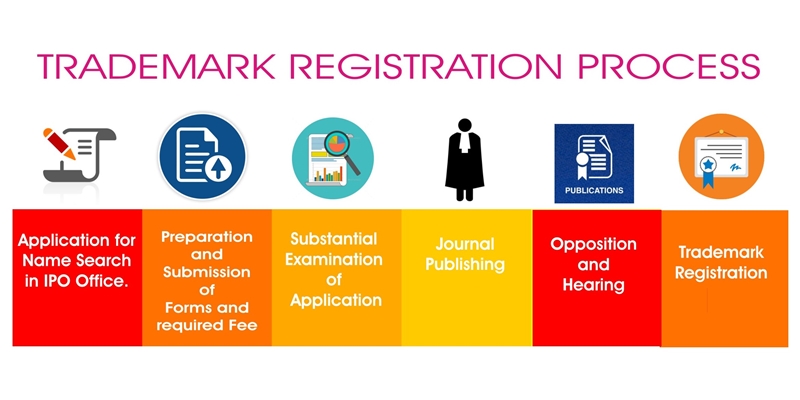
What Is a Trademark or Service Mark
A trademark is a brand name. A trademark or service mark includes any word, name, symbol, device, or any combination, used or intended to be used to identify and distinguish the goods/services of one seller or provider from those of others, and to indicate the source of the goods/services.
A registered trademark is an intangible asset for a business and is used to protect the company’s investment in the brand or symbol. After Trademarking your logo or brand, a registered TM number which works as trademark license is assigned within a period of three days by Trademark department but it takes almost two years for it to be registered so that you can use to use ® symbol with your brand name. It is always advised to get Trademark registration or brand name registration because getting your company registered will not protect your brand against those who might initiate using identical or similar marks.
It is important to understand whether you should file for a trademark/service mark, a patent, and/or a copyright. While all are types of intellectual property, each protects something very specific. In addition to watching the video above, you can study how trademarks, patents, and copyrights differ to ensure you are making the proper filing decision at the outset of the filing process.
Understanding trademark symbols
A trademark is denoted by the trademark symbol TM or by the federal registration symbol ® if an actual registration filing has been approved by the United States Patent and Trademark Office (USPTO).
A service mark, denoted by the symbol SM, offers virtually the same protection as a trademark but is used instead to identify and distinguish services rather than products. When the term “trademark” or “mark” is used, it is understood to include service mark as well. Trademarks are usually synonymous with the brand name or design that is applied to a business or its products or that is used in connection with services.
Trademark protection
Whereas patents and copyrights are basically used to protect the commercial rights of inventors and creators of artistic or literary works, respectively, the basic concept behind a trademark or service mark is to prevent unfair competition.
Trademark law protects you, the owner, from competitors stealing your identity or using a name or symbol so similar that it could cause confusion for your clients or customers. By identifying a product or service’s source, a trademark or service mark also serves to protect consumers from deception.
Steps In Trademark Application
Step 1 : Trademark search (1 day)
we check trademark availability or check brand name availability on the behalf of their customers to make sure that their desired name or design has not already been taken or isn’t too similar to an already existing trademark.
Step 2 : Create trademark application (1 day)
Once we ensure that your chosen name or design is available & exclusive, we send you an authorization letter which has to be duly signed by you and returned to us. These letters give our lawyers authority to file a trademark application on your behalf.
Step 3 : Trademark application submission (1 day)
Once we receive the authorization letter & provided that no information is incorrect or partial, our lawyers will file the trademark on your behalf, and you can immediately start using the ™ symbol. We will provide you with the TM application number.
We file the trademark different at the central trademark department office or via online. A trademark can be filed online only by a registered lawyer or agent.
Step 4: Trademark registration (1.5 years)
Once a trademark application is complete, your application will be verified by the trademarks office. The government can also raise an objection on if your name similar to some other trademark in the same class, or the name is deemed obscene, hurts religious sentiments.
In case no objection is raised, the trademark registrar will publish an advertisement in the trademarks journal. If no opposition is filed by any party within a period of 4 months, the trademark should be registered within the next 6 months. During this period, we constantly provide you with updates regarding the status of your application. You will need to pay the additional fee in case of such objections.
Step 5: Hearing before Registrar
If the objection has been filed on your trademark and the opposition doesn’t agree with your response, then hearing is held before the registrar. We appoint lawyers (charges extra) to take up your case in front of the registrar.
